Edit 1: Updated Graphics Comparison section with before/after shots of Godot and accuracy corrections.
Edit 2: There was some confusion over whether the Deponia devs used Godot for their PS4 port. I had removed that content, but now they they have officially confirmed that it WAS in fact a PS4 port. Links in the Publishing section.
Edit 3: I’ve received questions regarding the preference for a 2D renderer option, so I’ve added a paragraph explaining my motivations in the Graphics section.
Edit 4: Godot lead developer Juan Linietsky mentioned in a comment a few points of advancement present in the new 3D renderer. The Graphics section has been updated with a link to his comment.
Edit 5: I have personally confirmed that the GDNative C++ scripting on Windows 10 x64 is now fully functional in a VS2015 project. Updating the Scripting section.
Edit 6: I have received new information regarding the relative performance of future Godot scripting options. I have therefore updated the scripting section.
Edit 7: Unity Technologies that they are phasing out UnityScript. Updating the Scripting section. Also, making a correction to Unreal’s 2D renderer description in Graphics.
Edit 8: Unreal recently added C# as a scripting language. I’ve updated the Scripting section accordingly.
Edit 9: More “official” blog posts / tutorials have been made explaining other aspects of the Godot Engine, so I am including links to those where appropriate.
Edit 10: Adding a GM:S API diff link.
Edit 11: Including addendums to each section for GameMaker: Studio, because I frequently see people despairing that this article doesn’t include it in its comparisons.
Introduction
I’ve been tinkering with game development for around 5 years now. I’ve worked with GameMaker: Studio (1.x, though I’ve seen 2.0), Unity, and Unreal Engine 4 along with some exploration of Phaser, Construct 2, and custom C++ engine development (SFML, SFGUI, EntityX). Through my journey, I’ve struggled to find an engine that has just the right qualities, including…
- Graphics:
- Dedicated 2D renderer
- Dedicated 3D renderer
- Accessibility:
- Powerful scripting capabilities
- Strong community
- Good documentation
- Preferred: visual scripting (for simpler designer/artist/writer tooling)
- Preferred: Simple and intuitive scripting architecture
- Publishing:
- A large variety of cross-platform support (non-negotiable)
- Continuously expanding/improving cross-platform support (non-negotiable)
- Cost:
- Low monetary cost
- Indie-friendly licensing options
- Customization:
- Ease of extending the editor for custom tool creation
- Capacity for powerful optimizations (likely via C++)
- Preferred: open source
- Preferred: ease of editing the engine itself for community bug fixes / enhancements
For each associated field, I’ll examine some various features in the top engines and include a comparison with the new contender on the block: Godot Engine, a community-driven, free and open source engine that is beginning to expand its graphics rendering capabilities. Note that my comments on the Godot Engine will be in reference to the newest Godot 3.0 pre-alpha currently in development and nearing completion.
Initial Filtering Caveats
Outside of the big 3, i.e. GM:S, Unity and UE4, everything fails on the publishing criteria alone since any custom or web-based engine isn’t going to be easily or efficiently optimized for publishing to other platforms.
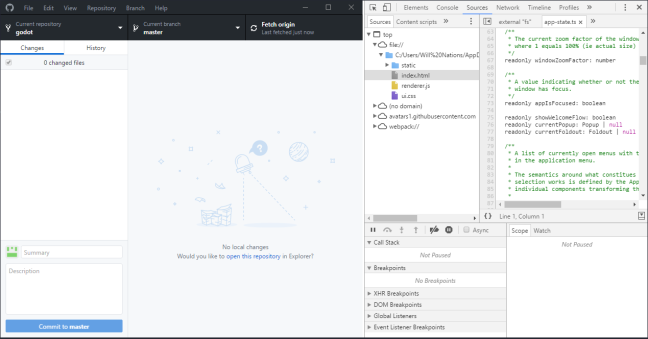
It is true that technologies such as Electron have been developed that ensure that it is possible to port HTML5 projects into desktop and mobile applications, but those will inherently suffer limitations in ways natively low-level engines will not. HTML5 games will always need to rely on 3rd party conversion tools in order to become available for more and more platforms. If we wish to avoid that limitation, then that leaves us with engines written in C++ that allow for scripting languages and optimizations of some sort.
GM:S’s scripting system is more oriented towards beginners and doesn’t have quite the same flexibility that C# (Unity) or Blueprint (UE4) has. In addition, GM:S has no capacity for extending the functionality of the engine or optimizing code. The latest version has a $100 buy-in (or a severely handicapped free version). Without a reasonable free-to-use option available in addition to all of the other issues, GM:S fails to meet our constraints. That leaves only Unity, Unreal, and Godot.
Edit: for people who decide to try Godot, someone has started a repository for collecting API differences between Godot and GM:S.
Edit: Due to comments I’ve received over the past several months, I will add sections covering GameMaker: Studio. Note that while I have first-hand experience with 1, I’ve only watched some comparison videos for version 2, so it is possible that I may have missed something.
Graphics Comparisons
There is no doubt that Unreal Engine 4 is currently the reigning champion when it comes to graphical power with Unity coming in at a close second. In regards to 2D renderers, it should be noted that…
- Unity has no dedicated 2D renderer as selecting a 2D environment just locks the z-axis / orthogonal view of the 3D cameras in the 3D environment.
- Unreal’s dedicated 2D renderer, Slate, can be leveraged through the UMG widget framework to be used in the 3D environment. In a project consisting solely of UMG content therefore, you can more or less use Unreal to get the benefits of operating solely within a 2D renderer. However, all of Unreal’s official tooling and features related to 2D are confined within the non-UMG content (collision, physics, etc.), so it’s not exactly a legitimate “support” for 2D rendering.
- GameMaker: Studio has a dedicated 2D renderer. From what I understand, they have begun to simplify the workflow for 3D rendering as well, although, it personally sounds like it’s still a laborious process.
- Godot has a dedicated 2D renderer (what it started with in fact) and a dedicated 3D renderer with similar APIs and functionality for each.
For those who might wonder why a dedicated 2D renderer is even significant, the main reason is the ease of position computation. If you were to shift an object’s position in 2D, the positions (at least in Godot) are described purely in terms of pixels, so it’s a simple pair of addition operations (one for each axis). An analogous operation in a 3D renderer requires one to map from pixels to world units (a multiplication), calculate the new position in world coordinates (3 additions) and then convert from world space to screen space (a matrix multiplication, so several multiplications and additions). Things are just a lot more efficient if you have the option of working directly with a 2D renderer.
For the 3D rendering side, Unity and Unreal are top dogs in the industry, no doubt about it.
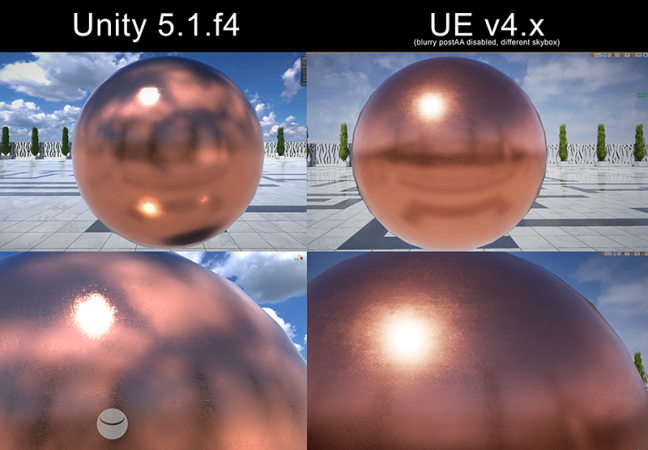
I had some trouble finding sensible 3D examples for GameMaker Studio 2. This was one of 3 images I discovered. It appears to be decent, but not quite of the same caliber as the others.

Godot 2.x’s 3D renderer left something to be desired compared with Unity/UE4 (similar to GMS, although the workflow for the same quality of work in Godot 2.x appears to be much simpler than in GMS). The showcased marketing materials on their website look like this:
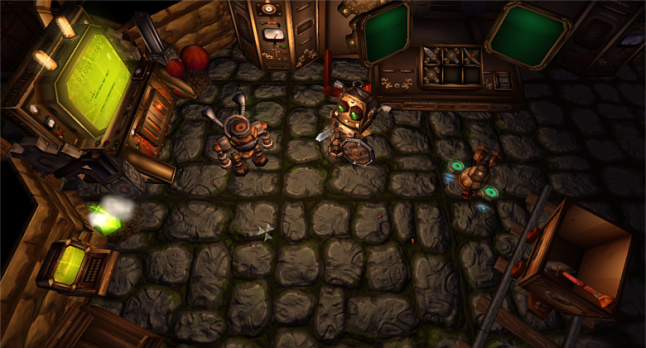
With Godot 3.0, steps are being taken to bring Godot closer to the fold. Pretty soon, we may start to see marketing materials like this:

I’d say that’s a grand improvement, and this graphical foundation lays the groundwork for an impressive future if the words of Godot’s lead developer, Juan Linietsky, are to be taken to heart. (Edit: Juan recently published an article that goes into MUCH further detail regarding how the 3D renderer works. He also recently updated the docs for the Godot shading language)
It remains to be seen exactly how far this advancement will go, but if this jump in progress is any indication, I see potential for Godot 3.0 to enter the same domain of quality as Unity and Unreal.
Publishing Comparisons
Unity is by far the leader in publishing platform diversity with Unreal coming in second and Godot coming in last.




(Note that Switch support for GMS is on its way soon.)

Note that for Godot specifically, it also has the capacity to be integrated with console platforms since it is natively written in C++; all you need is the development kit. For legal reasons, however, Godot’s free and open source GitHub cannot include (and thereby publicize freely) the integrated source code for these proprietary kits. Developers who already own a devkit can provide ports, but legally, the non-profit that manages Godot Engine (more on that later) cannot be involved. Despite this setback, the PS4 port of the game Deponia was implemented in Godot.
In addition, Godot 3.0 has recently conformed to the OpenHMD API, integrating functionality for all VR platforms that rely on that standard (so that would include HTC Vive, Oculus Rift, and PSVR). The community is gradually adding VR support, documentation, demonstrations, and tutorials.

All in all, Unity is still the clear leader here, but both Unreal and Godot provide a wealth of options for prospective developers to publish to the most notable and widespread platforms related to game development. As such, this factor tends to be somewhat irrelevant unless one is targeting release on one of the engine-specific platforms.
Licensing Comparisons
Unity’s free license permits the developer to craft projects with little-to-no feature limitations (only Unity-powered services are restricted, not the engine itself), so long as the user’s total revenue from a singular game title does not exceed $100,000 (since time of writing). The license does limit the number of installations you can have, however, as they are linked to a “Personal Edition” of the software. If you end up exceeding the usage limits, then you must pay for a premium license that involves a $35 (to double the monetary limit) or $125 (to remove the monetary limit) monthly subscription rate.
Unreal Engine 4 likewise has a free license, however its license has no restrictions whatsoever on the size of your team or the number of instances of the engine you are using (distinct from Unity). On the other hand, it has a revenue-sharing license in which 5% of all income over $3,000 per quarter is contributed to Epic Games.

The licensing between these two platforms therefore can be more or less beneficial depending on…
- How long you plan to spend developing (if using Unity professionally).
- How quickly you expect the revenue from your game to roll in (if it dips into UE4’s 5% cut trigger).
- How much total revenue you expect to make from a single game (Unity’s revenue cap per title).
GameMaker: Studio is priced from the very beginning. It supplies a free trial with limited asset usage (a bit of an extreme nerf in my opinion) and then ever-increasing purchase rates to get licenses that can publish to more platforms, ranging from $39 (desktop only) all the way to $399 (desktop, mobile, web, and console).
Godot, as you might expect, has no restrictions in any capacity since it is a free and open source engine. It uses the MIT license, effectively stating that you may use it for whatever purposes you wish, personal or commercial, and have no obligation to share any resources or accumulated revenue with the engine developers in any way. You can create as many copies of the engine as you like for as many people as you like. The engine itself is developed through the support of its contributors’ generous free work and through a Patreon that is filtered by the Software Freedom Conservancy.
In this domain, Godot is the obvious winner. The trade-off therefore comes in the form of the additional tooling and effort you as a developer have to invest to develop and publish your game with Godot. This and more we shall cover in the below examinations.
Scripting Comparisons
Edit: For a more detailed overview of the scripting API differences, please check out my subsequent article.
Unity officially supports Mono-powered C#. With some tweaking, you could potentially use other .NET languages too (like F#). If you end up needing optimizations, you are restricted to the high level language’s typical methods of speeding things up. It would be more convenient and vastly more efficient if one could just directly develop C++ code that can be called from the engine, but alas, this is not the case. Unity also doesn’t have any native visual scripting tools, although there are several paid-for extensions to the engine that people have developed.
Unreal Engine 4 is gaining a stronger and stronger presence due to its tight integration of C++, the powerful, native Blueprint visual scripting language, and its recent addition of Mono C#. Blueprint is flexible, effective, and can be compiled down into somewhat optimized C++ code. Unreal C++ is an impressive concoction of its own that adds reflection and garbage collection features commonly associated with high level languages like C#.

GameMaker: Studio has its own GameMaker Language scripting language. It’s simple enough to use for beginners. What’s also cool is an even more beginner-friendly drag-and-drop programming system that can auto-translate to GML (at least in version 2). Somehow, this all gets mixed into a visual scripting framework that connects things (only in version 2, these are all disparate windows in version 1).
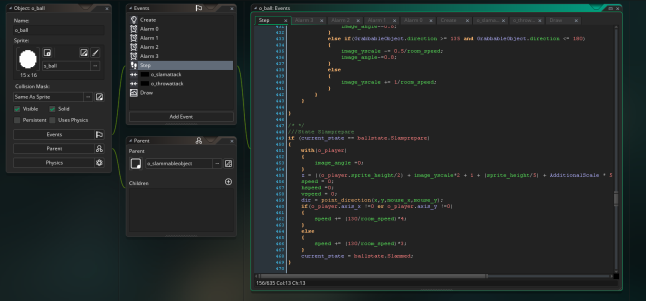
It is in this area that Godot especially shines out from the others. Previous iterations of Godot have had directly implemented C++ and an in-house python-like scripting language called GDScript. It was used after having already tried Python, Lua, and other scripting languages and found all of them lacking in efficiency when dealing with the unique architectural designs that the Godot Engine implements. As such, GDScript is uniquely tailored for Godot usability in the same way that Blueprints for UE4 are.
Later on, a visual scripting system called VisualScript was implemented that could function equivalently to GDScript. Godot 3.0 is also including native support for Mono C# to cater to Unity enthusiasts.

The power that truly sets Godot 3.0 apart however is its inclusion of a new C API for binding scripted properties, methods, and classes to code implemented in other languages. This API allows any native or bound language’s capabilities to be automatically integrated with every other native or bound language’s dynamically linked functionality. The dynamically linked libraries are registered as “GDNative” code that points to the bound languages’ code rather than as an in-engine script, effectively creating a foreign interface to Godot’s API. This means that properties, methods, and classes declared and implemented in one language can be used by any other language that has also been bound. Bindings of this sort have already been implemented for C++ (Windows, Mac, and Linux). Developers are also testing bindings for Python (already in beta), Nim, and D. Rust and JavaScript bindings are in the works as well, if I understand correctly.
In comparing these various scripting options, C# will likely have better performance than GDScript, but GDScript is more tightly integrated and easier to use. VisualScript will be the least performant of these, but arguably the easiest for non-programmers to use. If raw performance is the goal, then GDNative will be the most effective (since it is literally native code), but it is the least easiest to use out of these as you have to create different builds of the dynamic library for each target platform.
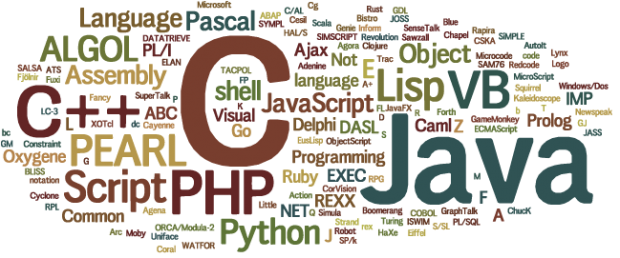
The “loose integration” this enables will empower any Godot developer to leverage pre-existing libraries associated with any of the bound languages such as C++’s enhanced optimizations/data structures, any C# Unity plugins that are ported to Godot, pre-existing GDScript plugins, and the massive library of powerful statistical analysis and machine learning algorithms already implemented by data research scientists in Python. With every newly added language, users of Godot will not have to resign themselves to the daunting “language barrier” that haunts game development today. Instead, they’ll be able to create applications that take advantage of every conceivable library from every language they like.
Edit: C# was recently merged in, and someone ran a comparison of the performance between GDScript, C#/Mono, and GDNative C++. In addition, here is a post I made on Reddit that goes more in-depth into the relationship between the engine’s scripting languages.
Framework Comparisons
Unity and Unreal have very similar and highly analogous APIs when it comes to the basic assets developers work with. There are the loadable spaces in the game world (the Scene in Unity or Level in Unreal). They then have component systems and a discrete root entity that is used to handle logic referring to a collection of components (the GameObject in Unity or Actor in Unreal). Loadable spaces are organized as tree hierarchies of the discrete entities (Scene Hierarchy in Unity or World Outliner in Unreal) and the discrete entities can be saved into a generalizable format that can be duplicated or inherited from (the Prefab in Unity or Blueprint in Unreal).
If you want to extend the functionality of these discrete entities, you then must create scripts for them. In Unity this is done by adding a new MonoBehaviour component within the 1-dimensional list of components associated with a game object. You can add multiple scripts and each script can have its own properties that are exported to the editor’s property viewer (the “Inspector”).

In Unreal, a discrete entity has an Actor-level tree-hierarchy showing its components. Scripts, however, are not components themselves (although scripts can extend components too), but rather things directly added to the Actor Blueprint as a whole. An individual function may be created from scratch or extending/overloading an existing function. One can also create Blueprint scripts disassociated from any entity as an engine asset (called a Blueprint Function Library). The bad news is that Blueprints aren’t just a file you point to, i.e. you can’t just add the same script file to different Blueprints like you can with Unity’s C# files.

In GameMaker: Studio, you create “rooms” in which to place your objects, sprites, tiles, backgrounds, etc. Version 2 has added the ability for rooms to inherit from one another, which is an interesting nuance compared to Unity/UE4’s methods, allowing you to sort of “Blueprint” your room layout and initialized properties. The objects you place in these rooms can then have scripted responses to in-game events. Objects can inherit from one another, but there is no notion of a component system. In order to construct any sort of composition, the “has” relationships need to be declared overtly by searching the room for the object you wish to own and then manually assigning that object id to a variable. It feels clunky to me personally, but its simplicity can simplify things for beginners who don’t want to concern themselves with the cleanliness of their code.

In Godot, things are simplified a great deal. Components, called “Nodes” are similarly organized into discrete entities that can be saved, duplicated, inherited and instanced; however, Godot sees no difference between the way a Prefab/Blueprint would organize their components and the way a Scene/Level would organize the entities. Instead, it unifies these concepts into a “scene” in its entirety, i.e. a Prefab/Blueprint is a GameObject/Actor is a Scene/Level; everything is just a gigantic set of instanceable and inheritable relationships between nodes. Scenes can be instanced within other scenes, so you might have one scene each for your bullet, your gun, your character, and your level (using them as you would a Prefab/Blueprint). Scripts to extend node functionality are attached 1-to-1 with nodes, and nodes can be cheaply added with the attached script being built-in (Saved into the scene file) or externally linked from a saved script file.


This section is more or less just to demonstrate how each engine has their own way of organizing the game data and highlighting the relationships between elements of functionality. In my personal experience, I find Godot’s model to be much more intuitive to reason about and work with once preconceptions from other engines’ tropes are discarded, but to be honest, this is really just a matter of personal taste.
(Edit: for lack of another place to put this, I’m inserting here; Godot will soon be integrating the Bullet physics engine as an option you can toggle in the editor settings.)
Community and Documentation Comparisons
The glaringly divergent quality between the engines is the documentation. Unreal’s Blueprint and C++ documentation pale in comparison to the breadth and depth of Unity’s massive array of concepts, examples, and tutorials, built both by Unity Technologies and the large community. This is a damaging blow, but wouldn’t be so bad if Unreal’s documentation were at least adequate. Unfortunately, this is not the case: Blueprints have some diversity of tutorials and documentation (nothing like Unity’s though), especially from the user base, but Unreal C++’s documentation is abhorrently lacking. In-house tutorials will often times be several versions behind and the Q&A forums can take anywhere from a few days to weeks, months, or even over a year to get a proper response (several engine iterations later when the same issue is popping up still).
The ironic curve-ball in the situation is that Unreal Engine 4 publishes its own source code to its licensed users. One could arguably reference the source code itself in order to teach themselves UE4’s API and best practices. Unfortunately, Unreal C++ tends to be a huge, intimidating beast with custom compilation rules that are not well documented, even in code comments, and very difficult-to-follow code due simply to the complexity of the content. A typical advantage of source code-publishing projects is the capacity to spot a problem with the application, identify a fix, implement it, and submit a pull request, but the aforementioned complexity makes taking full advantage of UE4’s visible source code much more difficult for the average programmer (at least, in my experience and that of other programmers I’ve discussed it with).
GameMaker: Studio actually has very nice documentation for its usage which is a testament to its high usability for new beginners. And you can easily jump between functions and topics as most topics will provide a list of related functions. Therefore, learning about HOW to use a topic is often intertwined with the documentation on what the topic is (very beginner friendly). This is probably one of the highlights of using GM:S in my eyes.

Godot Engine’s documentation is stronger than Unreal’s, but still a bit weaker than Unity’s. I would also say there are some ways in which it is both better and worse than GameMaker: Studio’s (community managed means things can change very quickly, but it also means things need to be reported / discussed and someone has to actually do it. Proactive-ness is key). A public document generator is used for the Godot website documentation while an in-engine XML file is used to generate the contents of the Godot API documentation. As such, anybody can easily open up the associated files and add whatever information may be helpful to users (although they are approved by the community through pull requests).
On the downside this means that it is the developers’ responsibility to learn how to use tools. On the upside, the engine’s source code is beautifully written (and therefore very easy to understand), so teaching yourself isn’t really difficult when you really have to do it; however, that is often unnecessary as the already small community is filled with developers who have created very in-depth YouTube tutorials for many major tasks and elements of the engine.
You can receive fully informative answers to questions within a few hours on the Q&A website, Reddit page, or Facebook group (so it’s much more responsive than Unreal’s community). In this sense, the community is already active enough to start approaching the breadth and depth of Unity’s documentation and this level of detail is achieved with a minute fraction of the user base. If given the opportunity, a fully grown, matured, and active Godot community could easily create documentation approaching the likes of Unity’s professional work.
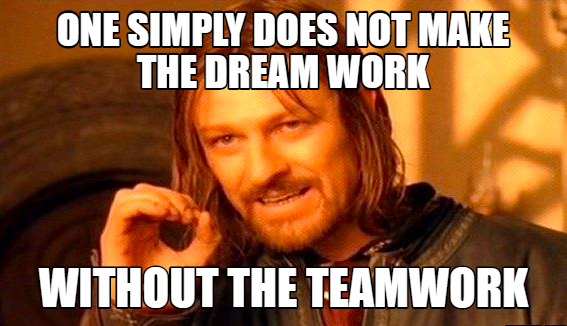
So, while Unity is currently still the winner here, it is also clear from Godot’s accessibility and elegance that even with a larger community, Godot could easily enhance the dimensions of its documentation and tutorials to compensate for the community’s needs.
(Edit: note, that the community has been doing weekly documentation sprints in anticipation of the 3.0 release. Even with API revisions between 2.1 and 3.0, the docs have already improved by roughly 20% over the previous version’s content in the past 5 weeks alone. If you are interested in assisting, please visit the Class API contribution guide to get involved and discuss your plans / progress with the #documentation Discord channel (Discord link).)
Extension Comparisons
Due to UE4’s code complexity and Unity’s closed-source nature, both engines suffer from the disease of needing to wait for the development teams to implement new feature requests, bug fixes, and enhancements.
UE4 supposedly exposes itself for editor extensions with their Slate UI that can be coded in C++, but 1) Slate is incredibly hard to read and interpret and 2) it relies on the C++ code just to extend the editor as opposed to a simple scripting solution.
Unity does supply a strong API for creating editor extensions though. Creating certain types of C# scripts with Attributes above methods and properties can allow one to somewhat easily (with a little bit of learning) develop an understanding of how to create new tools and windows for the Unity engine. The relative simplicity of developing extensions for the editor is a prime reason why the Unity Asset Store is so replete with available options for high quality editor extensions.
As far as I’m aware, GM:S provides some customization options for the UI itself, but doesn’t really provide any means of extending the editor (correct me if I’m wrong). They provide a means of making “extension packages” that let you bundle in scripting functionality and assets, but they don’t give users the ability to modify how the editor works very effectively. It has an extension marketplace similar to other high-profile engines.
Godot has an even easier interface for creating editor extensions than Unity: Adding the ‘tool’ keyword to the top line of a script simply tells the script to run at design time rather than run-time, instantly empowering the developer to understand how to manipulate their scripts for tool development: they need only apply their existing script understanding to the design-time state of the scene hierarchy.

EditorPlugin scripts can also be written to edit the engine UI and create new in-engine types. The greatest boon is that all of the logic and UI of the scripting API is the exact same API that allows them to control the logic and UI of the engine itself, allowing these EditorPlugin scripts to operate using the same knowledge already accumulated during one’s ordinary development. These qualities together make creating tools in Godot unbelievably accessible.
In a completely unexpected, but bewilderingly helpful feature, Godot also helps to simplify the process of team-based / communal extension development: all engine assets can be saved with binary files (the standard option for Unreal and Unity) OR with text-based, VCS-friendly files (.scn and .tscn, respectively). Using the latter kinda makes pull requests and git diffs trivially simple to analyze, so it comes highly recommended.
Another significant difference between Unity and Godot’s extension development is the cultural shift: when looking up something in the Unity Asset Store, you’ll often times find a half-dozen or more plugins for the same feature with different APIs, feature-depth/breadth, and price points.
Godot’s culture on the other hand is one of “free and open source tools, proprietary games”. Plugins on the Godot Asset Library must be published with an open license (most of them use MIT), readily available for community enhancements and bug fixes. There is usually only 1 plugin for any given feature with a common, community-debated implementation that results in a common toolset for ALL developers working with the feature in the engine. This common foundation of developer knowledge and lack of any cost makes integrating and learning Godot plugins a joy.
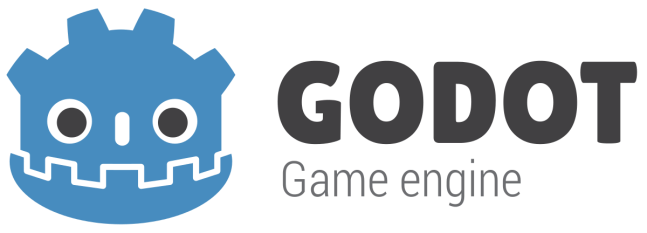
Conclusion
Given a desire for high accessibility, a strong publishing and community foundation, minimal cost, powerful optimizations, and enhanced extensibility, I believe I’ve made the potential of Godot 3.0’s affect on the game industry quite clear. If offered a chance, it could become a new super-power in the world of top-tier game engines.
This article is the result of my working with the Godot 3.0 pre-alpha for approximately 3 months. I had never investigated it before, but was blown away by the engine when I first started working with it. I simply wished to convey my experience as a C++ programmer and my insight into what the future of Godot might hold. Hopefully you too will be willing to at least give it a try.
Who knows? You might find yourself falling in love all over again. I know I did.



Interesting article. A few corrections on the Unity front:
The revenue caps are for an organization as a whole, not per game.
“Unity supports UnityScript (a variation of JavaScript), and Mono (which usually means C#, but could also potentially mean other .NET stuff like F#)” This is a strange and probably misleading way to describe its support. The entire scripting system is based on Mono, and supports UnityScript and C#. Officially it does not support F# or any other language. It’s not unreasonable to speculate it might be possible to hack other Mono languages in somehow, but it’s not really accurate to suggest they’re “supported.”
In the latest version, assets are no longer saved as binary by default, but serialized as text to aid compatibility with version control systems.
LikeLike
Do you have any sources to back up the claim that other .NET-languages were not supported? Last time I checked the projects still contained the dlls needed to run Boo code, and using F# requires no more than adding the appropriate dlls. Also the backend uses a system called “il2cpp” to generate C++ code, which suggests that any language that produces IL code is fine.
LikeLike
It’s in the manual: https://docs.unity3d.com/Manual/CreatingAndUsingScripts.html
“Unity supports two programming languages natively: C# (pronounced C-sharp), an industry-standard language similar to Java or C++; UnityScript, a language designed specifically for use with Unity and modelled after JavaScript.”
While I’m sure you’re right about Boo scripts still working, it’s not an officially supported language any more. As for F#, read back your own argument: “using F# requires no more than adding the appropriate dlls.” In other words… Unity itself doesn’t support F#, you’d have to add (unofficial) support yourself. Yeah, on the Asset Store you can buy an asset that allows coding in F#, but you can also buy assets that allow coding in Python, real ECMA JavaScript, Lua, etc. I think it’s misleading to say Unity “supports” any of those, at least without qualifying that they require third-party add-ons.
LikeLike
I could see how my phrasing could mislead someone into believing there is no added work to be done in order to use F# and such. Perhaps revising it to “, and Mono C# (and potentially other .NET languages like F#, assuming you’re willing to set it up properly).”
LikeLike
I’ll admit I’m not super well-versed on how things work at that deep a level, so I may be wrong here, but I’ve always been under the impression the entire API is powered by the Mono framework, not just the C# support. If this is correct, it might be most accurate to say something closer to “natively supports UnityScript and C# (and it’s based on the Mono framework so potentially…),” but that’s just my suggestion, it is your article after all.
LikeLike
Let me throw in one last note here on semantics: “supports” can be an ambiguous word to use, but because of how it tends to be used by most software projects in my experience, at least to me it implies that 1) it should just work out of the box and 2) if you have problems you can reasonably expect to receive help through official channels. I’d say with most software there are things that you can probably get working, but aren’t really “supported,” per se.
LikeLike
Hi, I would like to know the source of the information that Deponia was ported using Godot. Thanks
LikeLike
Certainly. I asked for critiques on the article within the Godot Engine Facebook group before publishing to other locations. One of the moderators for the Godot Engine GitHub (George Marques is his name) corrected an error of mine in the publishing section and informed me that Deponia had ported to PS4 using Godot. He then linked me to this tweet as a source. I then followed up by messaging Daedalic Entertainment for confirmation, but never received a response. Maybe you will have better luck?
I have updated the article to provide a link to that source in the associated Deponia reference.
LikeLike
I also am not too knowledgeable honestly – I only even heard about the other .NET languages thing from someone else. I agree with you that the semantics of “supports” is probably the real cause of confusion. I’ll make an edit to make it more clear.
LikeLike
I understand your point, but claiming that Unity didn’t “support” languages like F# is standing on very thin ice.
Yes, you do have to add the dlls for F#’s standard library, but that’s how you use a library in .NET. It’s not “adding (unofficial) support”, it’s using F#. And it’s far from “hacking it in somehow”.
Besides you don’t even have to go that far. Unity supports so called managed plugins, which means nothing else than that you can add any .NET dll to the project (https://docs.unity3d.com/Manual/Plugins.html). Notice that no language is mentioned, just the .NET-library.
So yeah, Unity doesn’t roll out the red carpet for you if you want to use a language like F#, but anyone who would ask for such a language will know how to use it in Unity.
On a side note: the plugin that was mentioned seems outdated. At least it’s not really necessary any more, it used to be a little more complicated to get F# to work, but now it’s as straightforward as can be.
LikeLike
Great article. Thank you very much indeed.
LikeLike
yeah, great article ! thanks you
I’m an indie developer, and I’m very new to Godot, and I’m interested in it mainly because it’s open source and C# compatible.
I really love C#, for me, it’s the best choice between ease of use, performances and maintainability.
I’ve tested and used Unity and UE4 for months. They are GREAT tools, really, but I’ve never managed to feel myself confortable using them. TOO much things to learn and to do, everything seems to be complicated to make, even for a basic 2D game.
For instance, Unity WordToViewport and similar functions are simply horrible to use, nothing to compare with the 2D draw process used in Love2D, Monogame, or Godot.
Just for that 2 points : simplicity and C#, godot seems to be a good choice.
Also because all usual points mentioned when talking about game engines (performance, rendering, blending, bump mapping, GI ….. bla bla bla) are simply totally unused by the majority of Indie productions.
As a solo game developer, who really loves coding and understanding what is done, I only need something easy to use, easy to learn, easy to code, free or unexpensive, with a great community who can help me if I’m stuck.
And It seems to me that Godot will meet my criteria.
LikeLiked by 1 person